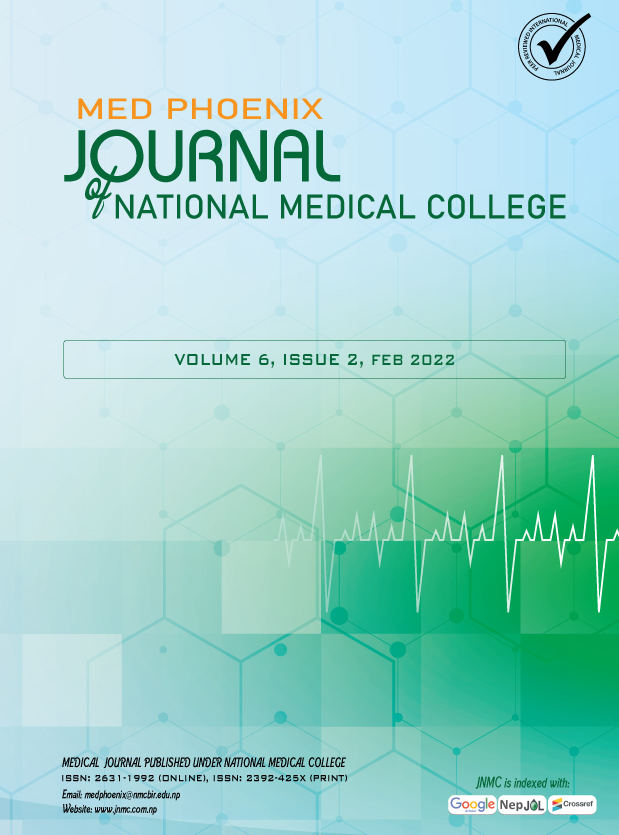Magnetic Resonance Cholangiopancreatography Evaluation of Intrahepatic Biliary Tree Variants in Nepalese Population based on Yoshida classification
DOI:
https://doi.org/10.3126/medphoenix.v6i2.42694Keywords:
intrahepatic bile duct, magnetic resonance cholangiopancreatography, NepalAbstract
Introduction
The meticulously arranged hierarchical structure of the biliary tree is pivotal for liver function. This biliary tree is divided into intra and extrahepatic components. The anatomic variations of the biliary tree are notoriously common with studies reporting variations in 20% to 55% of the population in different parts of the world. This may result in misdiagnosis and serious injury to the biliary system during surgical procedures. Thus, accurate knowledge of the biliary tree is essential for the interpretation of radiological examination and presurgical planning for hepatobiliary surgery such as laparoscopic cholecystectomy and liver transplant. Magnetic Resonance Cholangiopancreatography (MRCP) is a non-invasive and safe modality for the accurate evaluation of the biliary tree.
Materials and Methods
It was a prospective cross-sectional study performed using a 1.5 Tesla MRI machine. The complete morphology of intrahepatic bile ducts was evaluated and categorized as per Yoshida classification and compared with past literature.
Results
A total of 76 patients were studied during the period out of which 24 (31.6%) were males and 52 (68.4%) were females. The normal morphology of intrahepatic ducts (Yoshida type I) was found only in 44 (57.9%) cases and the rest of the cases (42.1%) showed variant anatomy. Yoshida type II was the next most common morphology. The study also found no significant correlation between the sex of the patient and the morphological variant.
Conclusion
Morphological variation of intrahepatic biliary ducts is very common. MRCP is a non-invasive and reliable method for the evaluation of intrahepatic biliary anatomy and its variants.
Downloads
Downloads
Published
How to Cite
Issue
Section
License
Copyright (c) 2022 Med Phoenix

This work is licensed under a Creative Commons Attribution 4.0 International License.
Copyright on any research article is transferred in full to MED PHOENIX upon publication. The copyright transfer includes the right to reproduce and distribute the article in any form of reproduction (printing, electronic media or any other form).
© MEDPHOENIX
![]()
Articles in the MED PHOENIX are Open Access articles published under the Creative Commons CC BY License (https://creativecommons.org/licenses/by/4.0/). This license permits use, distribution and reproduction in any medium, provided the original work is properly cited.




